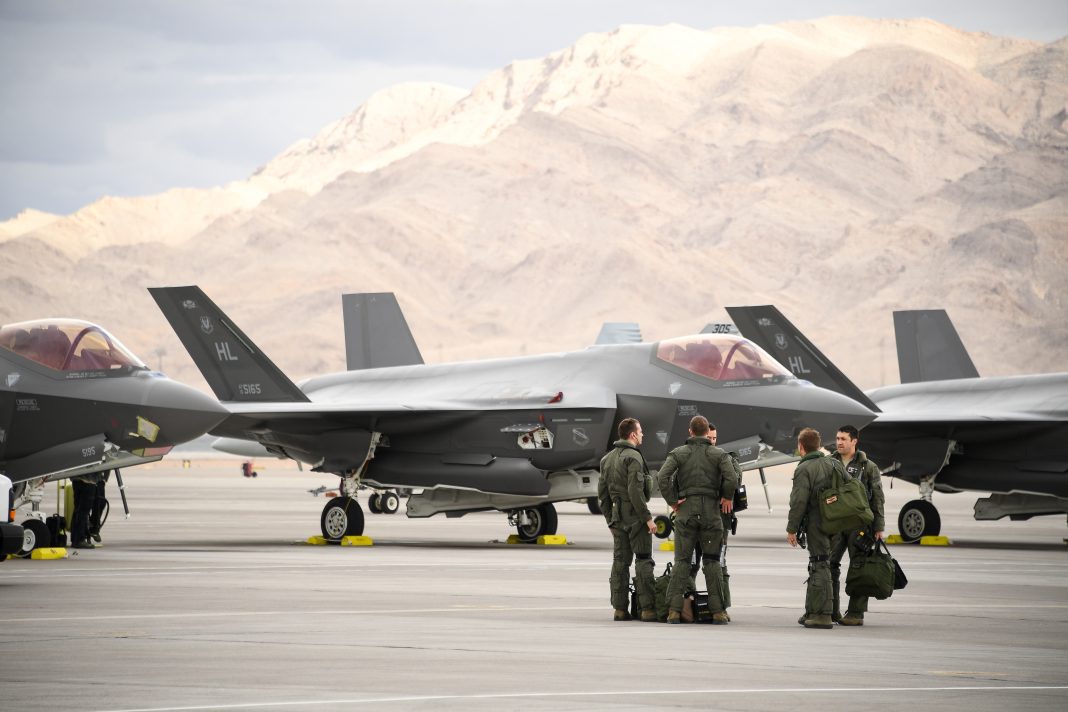On 15 September 2025, the Belgian Ambassador to the United States, Frederic Bernard, and Belgian Brigadier General Bart Verbist, Defence Attaché, visited Luke Air Force Base in Arizona. Their primary objective was to observe the training of Belgian Airmen on the F-35A Lightning II, the advanced fifth-generation fighter jet.
Belgian Delegation Observes F-35A Lightning II Training at Luke AFB
During the visit, they witnessed various exercises and training routines. As a result, the visit highlighted the strong defense ties between Belgium and the United States and provided insights into the progress of Belgium’s F-35 program. In other words, it offered a clear picture of how Belgian personnel are integrating into U.S. training operations and preparing for operational readiness.
During their visit, the delegation met with Brigadier General David Berkland, commander of the 56th Fighter Wing, and other U.S. officials. Discussions focused on how Belgian personnel are integrating into U.S. training operations and the steps being taken to prepare them for operational readiness. Ambassador Bernard described the visit as a “powerful reminder of the depth and strength of the Belgian-American defense relationship,” emphasizing the trust and coordination he observed between the two nations.
Air Force marks delivery of 500th F-35A to Jacksonville as 125th Wing transitions from F-15
The Belgian delegation also toured facilities and observed live training exercises involving the F-35A Lightning II. Ambassador Bernard noted that the collaboration between Belgian and U.S. forces demonstrates the high level of professionalism and unity that defines the transatlantic alliance.
Hands-On F-35A Lightning II Training and Squadron Integration
The 56th Fighter Wing at Luke AFB serves as the central hub for preparing Belgium’s new fleet of F-35A Lightning II jets. Within the wing, the 312th Fighter Squadron plays a pivotal role in training pilots and maintainers, ensuring they meet operational standards. During the visit, the Belgian delegation received detailed briefings on squadron activities and the structured integration process for Belgian personnel into the U.S. training system.
Lieutenant Colonel Pierre-Yves Libert, senior national representative of the 312th FS, explained that the training program focuses on operational readiness. “The ability to integrate our pilots and maintainers into a diverse and dynamic operational setting prepares them for the arrival of the first jets in Belgium,” he said. This hands-on approach provides Belgian Airmen with real-world experience in handling the F-35A Lightning II while maintaining their national operational standards.
Chilling Chinese Espionage Plot Erupts at Hotel in Alps Near F-35 Facility
The visit also included a walkthrough of academic and simulator facilities. Delegates observed classroom instruction, flight simulation exercises, and maintenance operations. Belgian and U.S. maintainers exchanged knowledge and experiences, strengthening operational cooperation. These exercises ensure that Belgian Airmen gain familiarity with the technical and operational procedures required to operate the F-35A Lightning II efficiently and safely.
Strengthening Transatlantic Defense Cooperation
Ambassador Bernard emphasized that the F-35A Lightning II training mission is about more than just learning to operate advanced equipment. “It’s about furthering our shared defense priorities that strengthen transatlantic security,” he said. He also highlighted Belgium’s ongoing commitment to investing in defense capabilities and working shoulder-to-shoulder with allies.
The visit showcased the professionalism, expertise, and strong unit culture of the 56th Fighter Wing. Both U.S. and Belgian Airmen demonstrated high-level skills in operating the F-35A Lightning II, reflecting the rigorous training and collaboration involved in the program. The event highlighted the operational interoperability between Belgium and the United States, which is essential for conducting joint missions effectively and maintaining strong defense readiness.
⚡ C100 quadcopter’s laser targeting helps F-35A hit every mark with GBU-12 smart bombs
By observing live training exercises and interacting with pilots and maintainers, the Belgian delegation reinforced the value of collaboration, mutual learning, and operational excellence. The exchange emphasized how shared experiences at Luke AFB strengthen the ability of Belgian and U.S. forces to operate seamlessly together in real-world scenarios.
This visit underlined Belgium’s dedication to its defense priorities and its strong military partnership with the United States. The F-35A training at Luke Air Force Base serves as a crucial step in ensuring that Belgian Airmen are fully prepared to operate the aircraft safely and effectively while strengthening international military cooperation.

